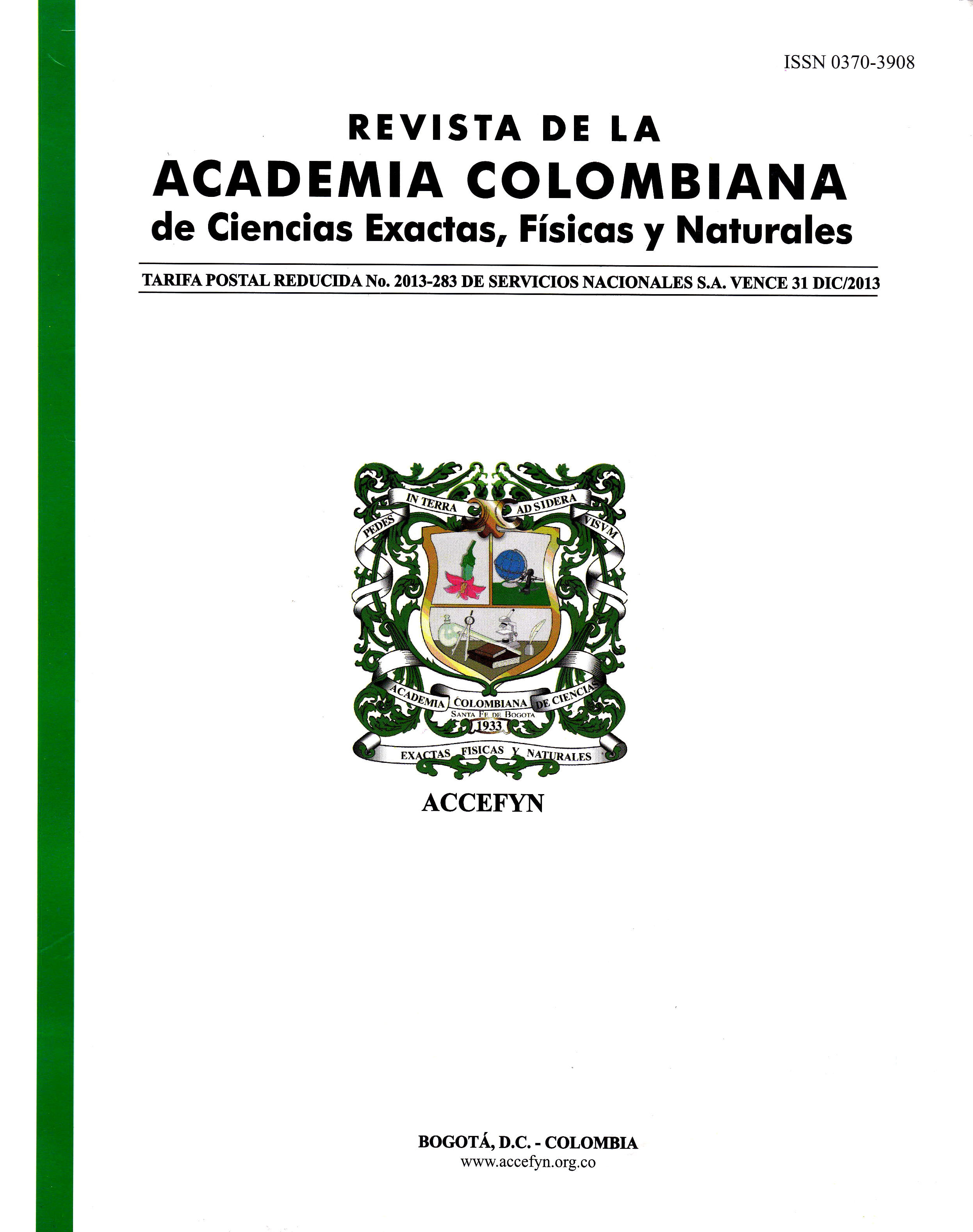Abstract
The onion´s white tip is an endemic disease at the Tesoritos´ farm of the Universidad de Caldas, whose causal agent is unknown, therefore, this research was conducted, seeking through a series of treatments, to discard as sumptions that exist about the cause of the disease, such as nutritional deficiencies and damage by plant parasite nematodes. This study was conducted at the Universidad de Caldas, under a hydroponic system. Five doses of boron were used: 0,5 1,0 20 40 and 60 ppm in a completely block design, with five repetition and six seedlings per repetition. It was determined disease incidence, height of seedlings and dry weigh of roots and foliage. It was found a direct relation between boron (B) concentration and disease incidence and inverse in relation to seedlings´ height and dry weigh of both roots and foliage. It was demonstrated that the white tip of onion is caused by excess of B, which induces chlorosis and apical deformation of the leaves, followed by weakness and death of the leaves, typical symptoms of the disease.
Keywords
References
AGRONEt, 2012. Producción de cebolla junca en Colombia. Reportes estadísticos del sector agropecuario con base en evaluaciones agropecuarias del Ministerio de Agricultura y Desarrollo Rural. En línea: http://www.agronet.gov.co/agronetweb1/Estad%C3%ADsticas/ReportesEstad%C3%ADsticos.aspx Consulta: Noviembre de 2012.
Ballesteros, A. F., Galvis, A., toro, H. & Ceballos, N. 2006. Factores asociados a la Punta blanca en el cultivo de la cebolla (Allium fistulosum L.). Trabajo de grado para optar al título de Ingeniero Agrónomo. Universidad de Caldas. 67 p.
Ceballos, N., Serna, A., Arbeláez, L., Correa, J. & Orozco, F. 2006. Efecto de tres tipos de fertilización sobre el desarrollo, rendimiento y calidad de la cebolla Junca (Allium cepa L.) en la granja Tesorito. Universidad de Caldas. Facultad de Ciencias Agropecuarias. Manizales. 14 p.
Corporación Colombia Internacional, CCI. 2004. Monitoreo de mercados. Mercado Nacional de Frutas y Hortalizas. Abril-junio. 4 p.
Corporación Colombia Internacional. 2009. La horticultura. En línea: http://www.cci.org.co/ccinew/pdf/SEMBREMOS/JULIO%202010%20REVISTA% 2013/producción.pdf. Consulta: junio, 2012.
Departamento Administrativo Nacional de Estadística, DANE. 2011. Resultados encuesta nacional agropecuaria, ENA. Bogotá, Colombia. 181 p.
Eaton, F. 1944. Deficiency, toxicity and accumulation of boron in plants. Journal of Agricultural Research 69: 237-277.
Espinoza, M. El cultivo de la cebolla. 2008. En línea: http://www.ergono-mix.com/MA-agricultura/cultivos-tropicales/artículos/cultivo-cebo-lla-2198/078-p0.htm. Consulta: junio de 2012.
Gunes, A., Soylemezoglu, G., Inal, A., Bagci, E.G., Coban, S. & Sahin, O. 2006. Antioxidant and stomatal responses of grapevine (Vitis vinifera L.) to boron toxicity. Scientia Horticulturae 110: 279-284.
Liu, D., Jiang, W., Zhang, L. & Li, L. 2000. Effects of boron ions on root growth and cell division of broadbean (Vicia faba L.). Israel Journal of Plant Science 48: 47-51.
Malaver, H. & Cantillo, H. 1989. Ejercicios de laboratorio para el curso de fisiología vegetal. Universidad Nacional de Colombia. Facultad de Ciencias Agropecuarias. Palmira.
Nable, R. O., Bañuelos, G. S. & Paull, J. G. 1997. Boron toxicity. Plant and Soil 198: 181-198.
Organización de las Naciones Unidas para la Alimentación y la Agricultura. FAO. 2010. En línea: http:www.//faostat.fao.org/site/567/DesktopDefaut.aspx?. Consulta: junio de 2012.
Pinzón, H. 2004. El cultivo de la cebolla de rama. Manual Técnico. Tibaitatá, Colombia. 40 p
Reid, R., Hayes, J., Post, A. & Stangoulis, J. 2004. A critical analysis of the causes of boron toxicity in plants. Plant Cell and Environment 25:1405-1414.
Schwartz, H. F. & Mohan, S. K. 1995. Compendium of Onion and Garlic Diseases and Pests. APS Press, St. Paul, MN. 127 p.
Stangoulis, J. C. R. & Graham, R. D. 2007. Boron and plant diseases. Pp. 207 – 214. In: Datnoff, L. E. et al. (Editors). Mineral Nutrition and Plant Disease. APS Press. St. Paul, Minnesota U.S.A.
Vargas-Calvo, A., Arias, F., Serrano, E. & Arias, O. 2007. Toxicidad de B en plantaciones de banano (Musa AAA) en Costa Rica. En: Agronomía Costarricense 31(2): 21-29.
Vargas-Calvo, A. 2009. Síntomas asociados con altas concentraciones de boro en Rambután (Nephelium lappaceum). En: Agronomía Mesoamericana 20(1): 121-126.

This work is licensed under a Creative Commons Attribution-NonCommercial-NoDerivatives 4.0 International License.
Copyright (c) 2023 Revista de la Academia Colombiana de Ciencias Exactas, Físicas y Naturales





